You can Download Samacheer Kalvi 12th Maths Book Solutions Guide Pdf, Tamilnadu State Board help you to revise the complete Syllabus and score more marks in your examinations.
Tamilnadu Samacheer Kalvi 12th Maths Solutions Chapter 10 Ordinary Differential Equations Ex 10.6
Solve the following differential equations:
Question 1.

Solution:
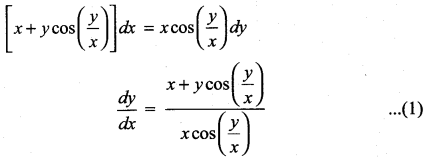
This is a Homogeneous differential equation
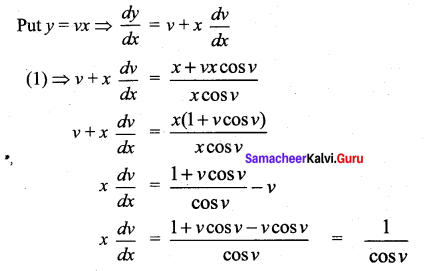
Seperating the variables
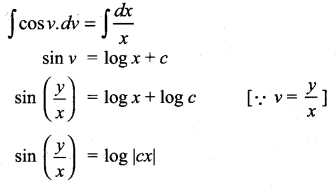
Question 2.
(x3 + y3) dy – x2y dx = 0
Solution:
(x3 + y3) dy – x2y dx = 0
(x3 + y3) dy = x3y dx

This is a Homogeneous differential equation.
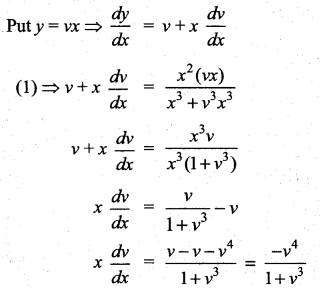
Separating the variables
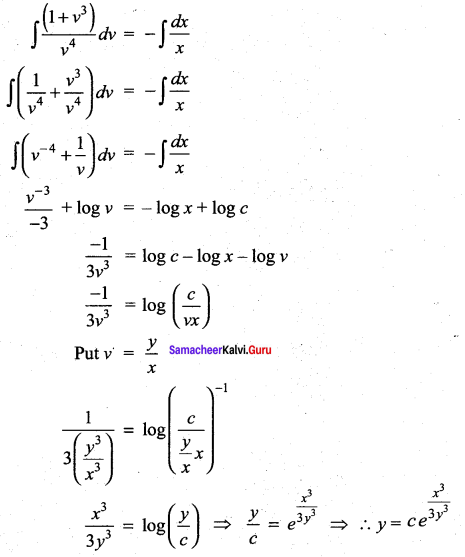
![]()
Question 3.

Solution:
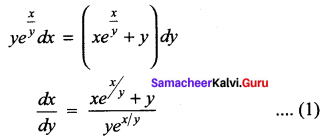
This is a Homogeneous differential equation
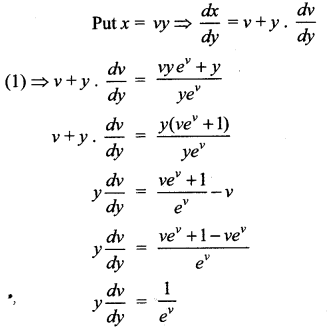
Seperating the variables
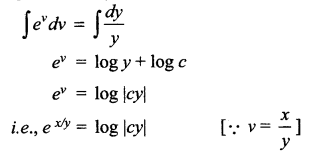
Question 4.
2xydx + (x2 + 2y2) dy = 0
Solution:
2xy dx + (x2 + 2y2) dy = 0
(x2 + 2y2) dy = – 2xy dx

This is a Homogeneous differential equation

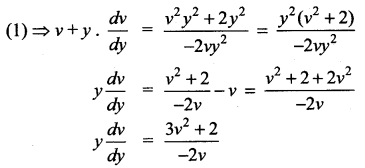
Separating the variables
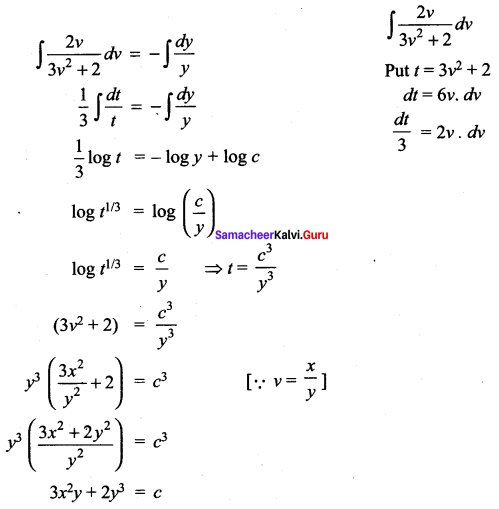
![]()
Question 5.
(y2 – 2xy)dx = (x2 – 2xy)dy
Solution:
(y2 – 2xy) dx = (x2 – 2xy) dy

This is a Homogeneous differential equation
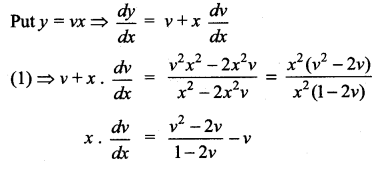

Seperating the variables
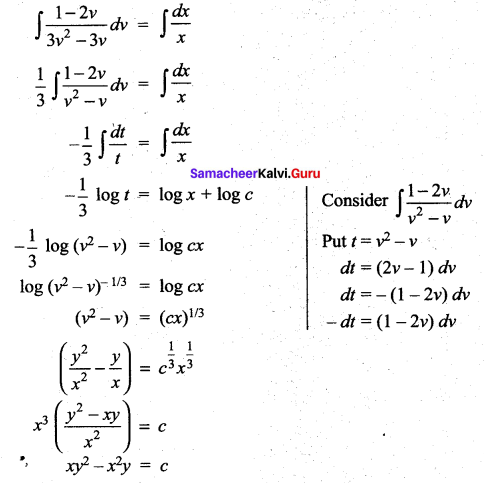
Question 6.

Solution:
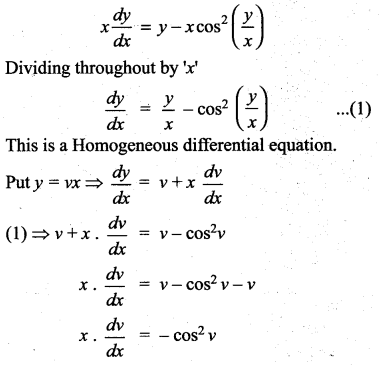
Seperating the variables
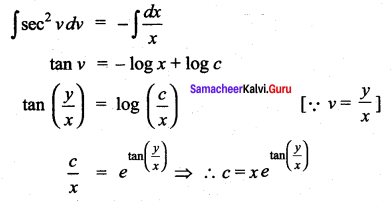
Question 7.

Solution:
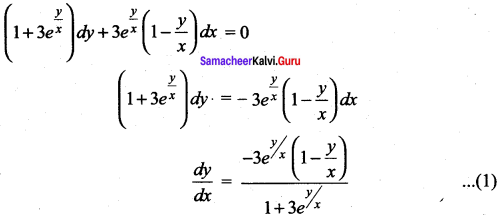
This is a Homogeneous differential equation
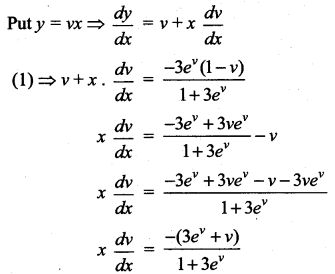
Separating the variables
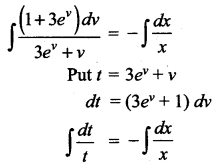
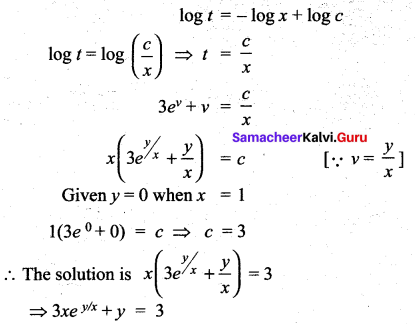
![]()
Question 8.
(x2 + y2) dy = xy dx. It is given that y(1) = 1 and y(x0) = e. Find the value of x0.
Solution:

This is a Homogeneous differential equation
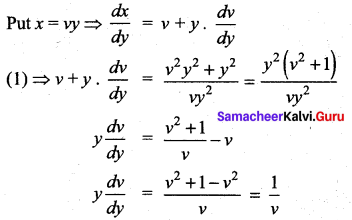
Seperating the variables
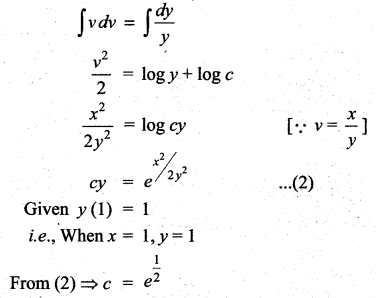
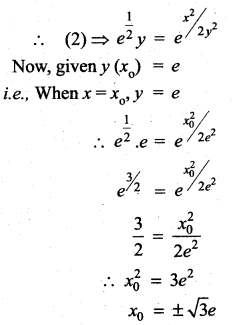
Samacheer Kalvi 12th Maths Solutions Chapter 10 Ordinary Differential Equations Ex 10.6 Additional problems
Question 1.
Solve: (2\(\sqrt{x y}\))dy + y dx = 0
Solution:
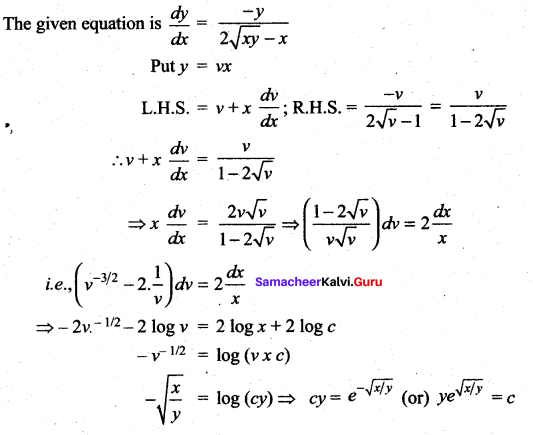
Question 2.
Solve: (x3 + 3xy2)dx + (y3 + 3x2y)dy = 0
Solution:

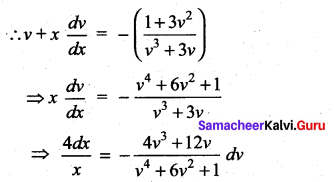
Integrating, we have

![]()
Question 3.

Solution:

Which is in terms of v alone.
⇒ the given problem comes under homogeneous type.
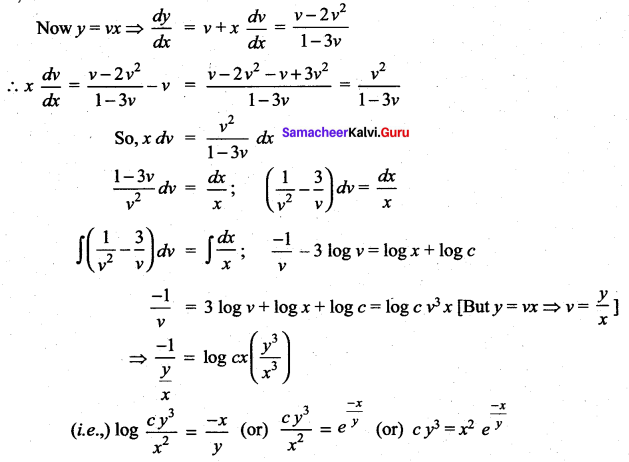

Question 4.
Solve: (x2 + y2)dy = xy dx
Solution:
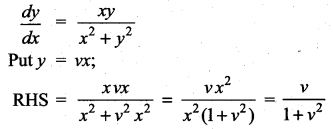
Which is a function in v alone.
⇒ the given problem comes under homogeneous type.
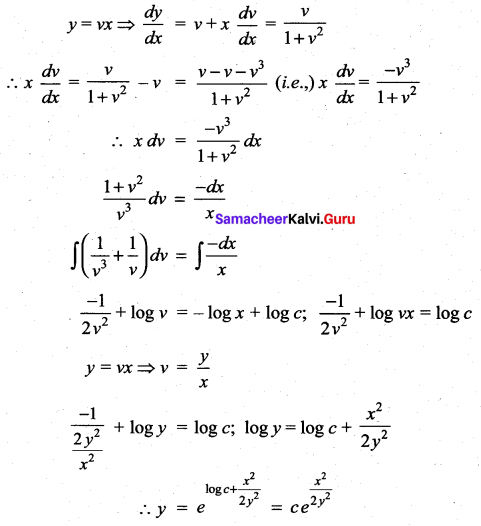
![]()
Question 5.
Find the equation of the curve passing through (1, 0) and which has slope \(1+\frac{y}{x}\) at (x, y).
Solution:
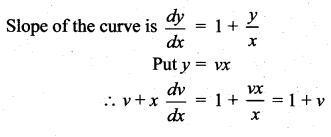
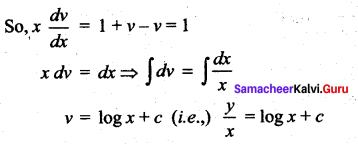
Given the curve passes through (1, 0) ⇒ at x = 1, y = 0
0 = log 1 +c ⇒ c = 0
![]()